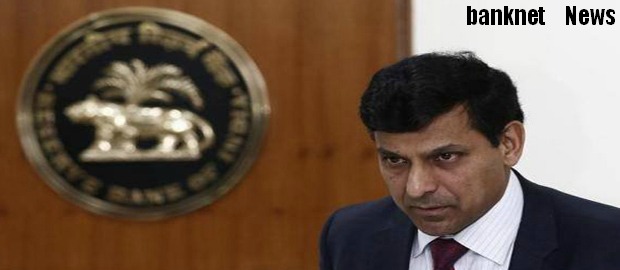

Fourth Bi-monthly Monetary Policy Statement, 2015-16 By Dr. Raghuram G. Rajan, Governor, RBI - Sept 29, 2015 - Full Text
Assessment
2. Since the third bi-monthly statement of August 2015, global growth has moderated, especially in emerging market economies (EMEs), global trade has deteriorated further and downside risks to growth have increased. In the United States, industrial production slowed as capital spending in the energy sector was cut back and exports contracted, weighed down by the strength of the US dollar. Consumer spending stayed buoyant, however, amidst steadily improving labour market conditions. In the Euro area, a fragile recovery strengthened, supported by domestic consumption, less slack in the labour market and improving financial conditions engendered by ultra-accommodative monetary policy. Economic activity in Japan, however, is faltering under the weight of weak private consumption and exports, with both business and consumer confidence subdued. EMEs are caught in a vortex of slowing global trade volumes, depressed commodity prices, weakening currencies and capital outflows, which is accentuating country-specific domestic constraints. China’s intended rebalancing from investment towards consumption is being hit by the stock market meltdown, slower industrial production and weaker exports. The devaluation of the renminbi on August 11, while mild, has unsettled financial markets across the world. Brazil and Russia are grappling with recession and runaway inflation, while South Africa is facing tightening structural constraints which threaten to tip it into a downturn.
3. Since the Chinese devaluation, equity prices, commodities and currencies have fallen sharply. Capital flight from EMEs into mature bond markets has pushed down developed market yields, and risk spreads across asset classes have widened. Although volatility ebbed in early September and capital flows returned cautiously to some EMEs, sentiment in financial markets remains fragile. The September 17 decision of the Federal Open Market Committee to stay on hold in response to global conditions and weak domestic inflation lifted financial markets briefly, but overall financial conditions are yet to stabilise.
4. In India, a tentative economic recovery is underway, but is still far from robust. In agriculture, sown area has expanded modestly from a year ago, reflecting the timely and robust onset of the monsoon in June, but the southwest monsoon is currently deficient by 14 per cent – with production-weighted rainfall deficiency at 20 per cent. Nevertheless, the first advance estimates indicate that food grain production is expected to be higher than last year, reflecting actions taken to contain the adverse effects of rain deficiency through timely advisories and regular monitoring of seed and fertiliser availability. Allied farm activities, which are more insulated from the monsoon, remain resilient and could partly offset the effects of adverse weather on crop production. Rural demand, however, remains subdued as reflected in still shrinking tractor and two-wheeler sales.
5. Manufacturing has exhibited uneven growth in April-July, with industrial activity slowing sequentially in July, although it has been in expansionary mode for the ninth month in succession. Industries such as apparel, furniture and motor vehicles have experienced acceleration. Furthermore, the resumption of growth in production of consumer durables in recent months, after a protracted period of contraction over the last two years, is indicative of some pick-up in consumption demand, primarily in urban areas. Since our last review, however, external demand conditions have turned weaker, suggesting a more persistent drag from lower exports and cheaper imports due to global overcapacity. This contributes to continuing domestic capacity under-utilisation, decelerating new orders and a rising ratio of finished goods inventories to sales.
6. As a result of still tepid aggregate demand, output price growth is weak, but input material costs have fallen further, leading to an increase in margins for most producers. Weak aggregate demand appears to have more than offset the effect of higher margins to hold back new investment intentions. The expansion in capital goods production, therefore, likely relates more to the revival of stalled projects than to a build-up of the green field pipeline. Survey-based business sentiment has been falling in recent quarters. The manufacturing purchasing managers’ index (PMI) nevertheless remained in expansion territory in August, although it slowed from July due to weak domestic and export order books.
7. In the services sector, construction activity is weakening as reflected in low demand for cement and the large inventory of unsold residential houses in some localities. Rising public expenditure on roads, ports and eventually railways could, however, provide some boost to construction going forward. Lead indicators relating to freight and passenger traffic are mixed. In August, the services PMI remained in expansion for the second consecutive month on improving new business, but business expectations remain subdued.
8. Headline consumer price index (CPI) inflation reached its lowest level in August since November 2014. The ebbing of inflation in the year so far is due to a combination of low month-on-month increases in prices and favourable base effects. Overall year-on-year food inflation dropped sharply, led by vegetables and sugar. Cereal inflation moderated steadily during April-August, but price pressures in respect of pulses and onions remained elevated.
9. CPI inflation excluding food and fuel eased in August for the second consecutive month, primarily due to the decline in petrol and diesel prices pulling down inflation in transportation. Fares other than for air transport have, however, remained inflexible downwards. Inflation in house rentals increased, but was more than offset by some moderation in the heterogeneous category of services, including education, personal care and effects, and health. Inflation expectations of households remained elevated in double digits likely in response to recent month-on-month increases in the prices of vegetables and pulses. Professional forecasters’ inflation expectations eased as credibility built around the January 2016 inflation target. Rural wage growth remains subdued and corporate staff costs decelerated.
10. Liquidity conditions eased considerably during August to mid-September. In addition to structural factors such as deposit mobilisation in excess of credit flow, lower currency demand and pick-up in spending by the government contributed to the surplus liquidity. In response, the Reserve Bank conducted variable rate reverse repos of overnight and longer tenors ranging from 2 to 20 days. As a result, the average net daily liquidity absorption by the Reserve Bank increased from ₹120 billion in July to ₹261 billion in August and further to ₹544 billion in September (up to September 15). Money market rates generally remained below the repo rate. As quarterly tax collections went out of the system from mid-September, deficit conditions returned and the Reserve Bank engaged in average net injections of the order of ₹544 billion (September 16 to 27), keeping the call money rate close to the repo rate. Some forms of bank credit such as personal loans grew strongly as did non-bank financing flows through commercial paper, public equity issues and housing finance.
11. With the weakening of growth prospects in EMEs and world trade volume growth falling below world GDP growth, India’s merchandise exports continued to decline in the first two months of Q2. Imports values also declined, but the sharp fall in international crude oil and gold prices was offset by rising import volumes. Non-oil non-gold imports went back into contraction after recording a marginal pick-up in the previous quarter, although there were higher imports of fertilisers, electronics and pulses. With services exports moderating, the widening of the merchandise trade deficit could lead to a modest increase in the current account deficit (CAD) during Q2. Net capital inflows were buoyed by sustained foreign direct investment and accretion to non-resident deposits, and reduced by portfolio outflows, mainly from equity markets. Foreign exchange reserves rose by US $ 10.4 billion during the first half of 2015-16.
Assessment ... Read more
Policy Stance and Rationale ... Read more
Banking Structure... Read more
Financial Markets ... Read more
Currency Management... Read more
RBI Monetary and Credit Policies (1999-2016) - Notifications, Press Releases, Reports - Click here

BANKING

FINANCE

INSURANCE

TECHNOLOGY

Foreign Exchange


